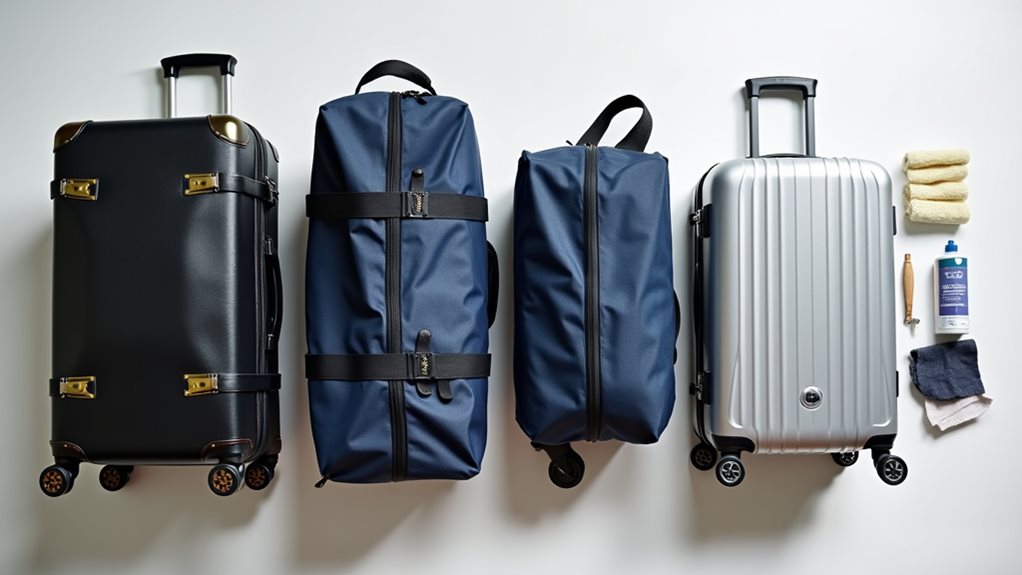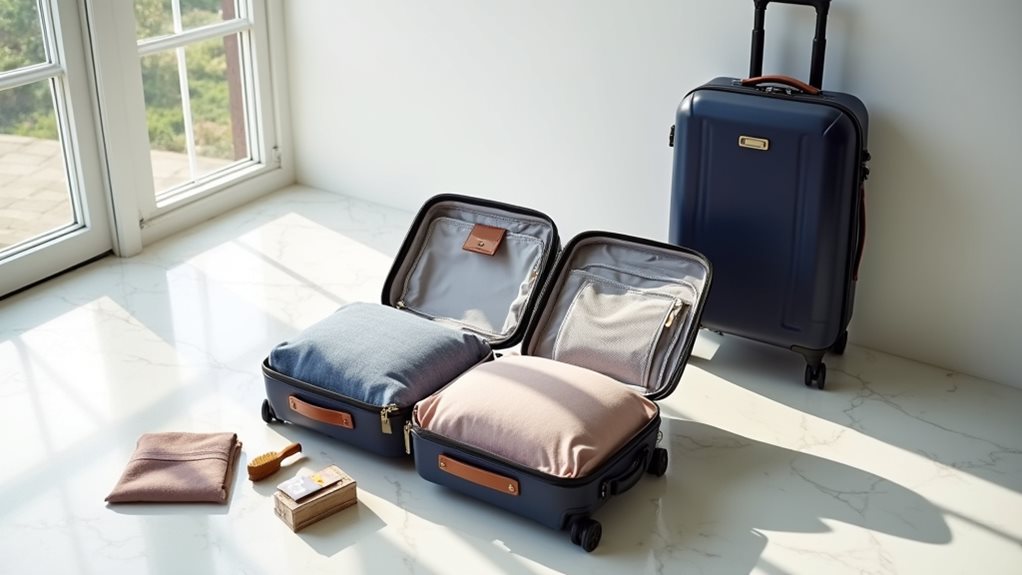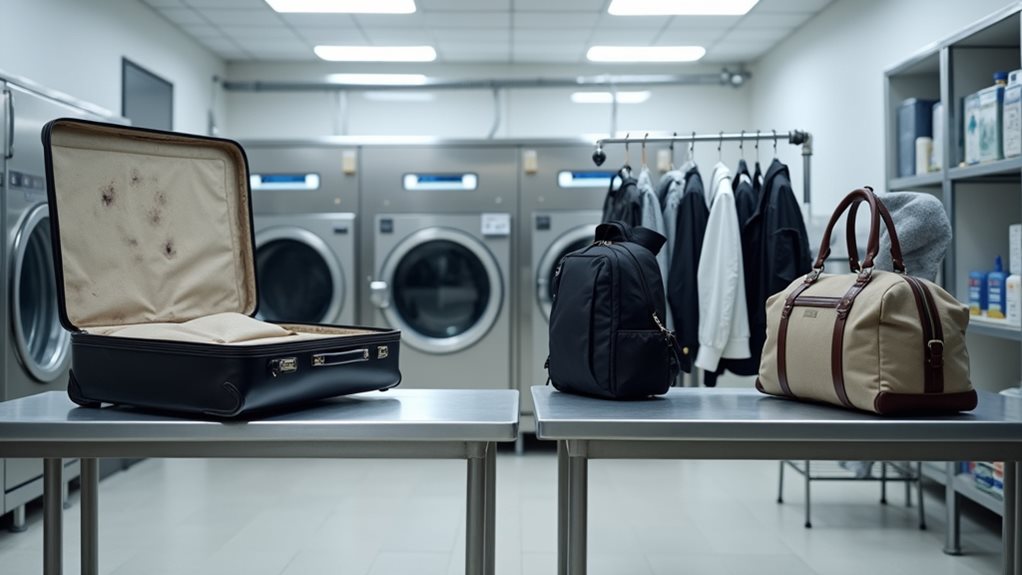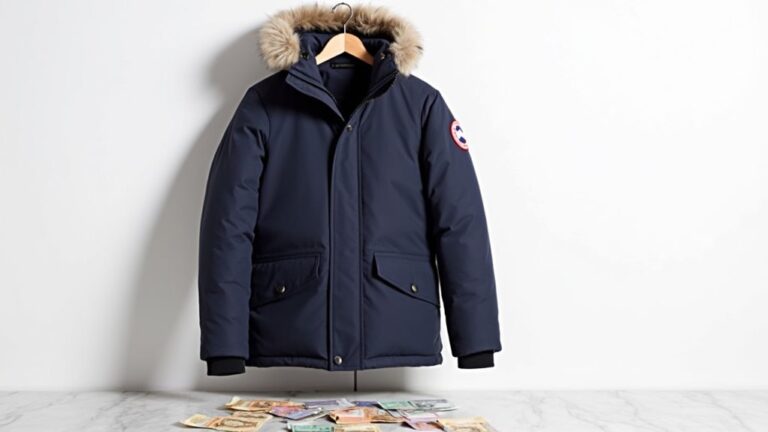You shouldn’t dry clean your luggage because those harsh chemical solvents will absolutely wreck synthetic materials, strip protective coatings from hard-shell cases, and void your warranty faster than you can say “expensive mistake.” I learned this the hard way when my favorite carry-on came back looking like it’d been through a blender! Instead, stick with gentle soap and water for most cleaning needs, or use disinfecting wipes with 60% alcohol for quick touch-ups after travel. There are smarter ways to keep your suitcase spotless without risking damage.
Why Dry Cleaning Luggage Is Not Recommended
While you might think tossing your well-traveled suitcase into the dry cleaner’s capable hands sounds like a brilliant solution after that messy vacation where everything seemed to spill, leak, or somehow transfer mysterious stains onto your beloved luggage, the reality is that dry cleaning can actually become your bag’s worst nightmare.
Those harsh solvents that work magic on delicate fabrics will wreak havoc on your travel bags, especially if they’re made from synthetic materials or feature hard-sided construction.
Dry cleaning solvents that pamper your silk blouse will absolutely destroy synthetic luggage materials and hard-shell cases.
Trust me, I’ve seen damaged materials that looked like they survived a chemical explosion rather than a cleaning session!
Most luggage manufacturers explicitly warn against dry cleaning methods, and honestly, you don’t want to void your warranty over a cleaning mishap that could’ve been avoided.
Additionally, the perchloroethylene (PERC) used in traditional dry cleaning can leave harmful residues on your luggage that could pose health risks when you handle your bags or pack your belongings.
Safe Cleaning Methods for Different Luggage Materials

Now that we’ve established why dry cleaning your luggage is about as wise as using a chainsaw to trim your eyebrows, let’s talk about the cleaning methods that’ll actually keep your travel companions looking fresh without turning them into expensive casualties.
For soft-sided luggage made from nylon or polyester, spot cleaning becomes your best friend – mix mild detergent with warm water, then gently work on stains with a soft cloth.
I’ve saved countless bags this way after messy airport food incidents!
Hardside cases need different TLC: soapy water and gentle wiping work wonders without scratching that sleek finish.
Regular maintenance, like weekly wipe-downs and fabric refresher sprays, prevents major cleaning emergencies.
Trust me, your future self will thank you for these simple habits! ✈️
How to Properly Disinfect Your Suitcase After Travel

After watching my pristine white suitcase return from a particularly grimy European adventure looking like it had been dragged through every train station from Paris to Prague, I learned the hard way that post-travel disinfection isn’t just about aesthetics – it’s about protecting your home from whatever microscopic hitchhikers decided to tag along for the ride.
Start by attacking high-touch surfaces with disinfecting wipes containing at least 60% alcohol, keeping those handles and wheels wet for thirty seconds minimum.
For interior cleaning, I’ve discovered that vinegar and water works better than expensive laundry detergent, effectively killing germs while staying gentle on materials.
Don’t forget to vacuum thoroughly and let everything air dry completely – trust me, moldy luggage covers aren’t the souvenir you want! 😅
Step-by-Step Guide to Cleaning Fabric and Hard-Shell Luggage

Now that you’ve disinfected your suitcase, it’s time to tackle the actual cleaning process, which honestly feels like giving your travel companion the spa day it deserves after hauling your overpacked belongings across three time zones.
Whether you’re dealing with fabric luggage that’s collected mysterious stains from that questionable airport snack or hard-shell cases sporting scuff marks from aggressive baggage handlers, each material requires its own gentle approach to restore that fresh-from-the-store appearance.
You’ll want to focus on three key areas: the proper technique for fabric surfaces, the straightforward method for hard-shell exteriors, and don’t forget those handles and wheels that bear the brunt of your travel adventures.
Fabric Luggage Cleaning Steps
Four essential steps will transform your grimy, travel-worn fabric luggage back into something you’d actually want to carry through an airport without feeling embarrassed.
First, gather your supplies: mild detergent, warm water, and a soft sponge or brush – think of it as your luggage rescue kit.
Second, mix that detergent with water to create your cleaning solution, because fabric luggage responds beautifully to gentle treatment rather than harsh chemicals.
Third, spot clean those stubborn stains by working the solution into problem areas with your soft sponge, using circular motions like you’re giving your bag a mini massage.
Finally, tackle the interior by wiping down the lining with a damp microfiber cloth, removing dust and that mysterious travel smell we’ve all experienced.
Hard-Shell Luggage Method
While fabric luggage requires that gentle touch we just discussed, hard-shell luggage demands a completely different approach that’s honestly much more straightforward once you understand its quirks.
First, you’ll want to empty everything completely—trust me, finding a soggy passport weeks later isn’t fun 😅.
Mix mild detergent with warm water, then use a soft cloth to wipe down surfaces, paying attention to those grimy wheel areas and handles where your hands constantly touch.
For stubborn scuff marks, a magic eraser works wonders without scratching.
Regular spot cleaning and maintenance of high-touch zones will keep your hard-shell luggage looking fresh, and always let it air dry completely to prevent any funky odors from developing.
Handle and Wheel Care
Most travelers completely neglect their luggage’s handles and wheels until something goes horribly wrong, like when I discovered my suitcase wheel had collected so much hair and debris that it looked like a tiny tumbleweed factory 🙄.
Regular cleaning prevents these disasters and keeps your luggage rolling effortlessly. For fabric luggage, gently scrub the handle and wheels with mild detergent mixed in warm water, using a soft-bristled brush to avoid damage.
Hard-shell luggage responds well to alcohol-based cleaners or soapy water applied with a clean rag. Don’t forget to inspect your wheels regularly, removing any tangled hair or debris with an all-purpose cleaner.
After cleaning, let everything air dry completely to prevent mold growth.
Professional Luggage Cleaning Services vs. DIY Methods

The decision between hiring professional luggage cleaners and tackling the job yourself reminds me of when I first attempted to deep-clean my grandmother’s vintage leather suitcase after discovering it in her attic, covered in decades of dust and mystery stains that looked like they’d stories to tell.
While DIY methods work wonderfully for surface dirt using household products like soap and vinegar, professional cleaning services shine when you’re dealing with deep-seated odors or stubborn bacteria that seem determined to stick around.
Consider getting a protective luggage cover after cleaning to prevent future mishaps!
Professional cleaners bring specialized equipment and customized solutions for different materials, often completing the job faster than your weekend warrior approach, though DIY definitely wins on budget-friendliness.
Many travelers also discover that upscale hotels offer convenient dry cleaning services through their concierge desks, which can be a helpful alternative when you need professional cleaning while on the road.
Best Practices for Maintaining and Storing Clean Luggage

After you’ve invested time and effort into getting your luggage sparkling clean, proper storage becomes your secret weapon for keeping it that way, much like how I learned the hard way when my freshly cleaned rolling bag developed a musty smell after sitting in my bedroom closet for six months.
Store it away from your bedroom in a garage or dry storage area where dust and critters can’t make themselves at home.
Before storing, wipe down all surfaces with water and gently clean every nook, then let it air out completely in sunlight.
Toss in some dryer sheets or soap bars to keep things fresh, and consider storing your packing cubes separately to maintain that just-cleaned feeling for your next adventure.




